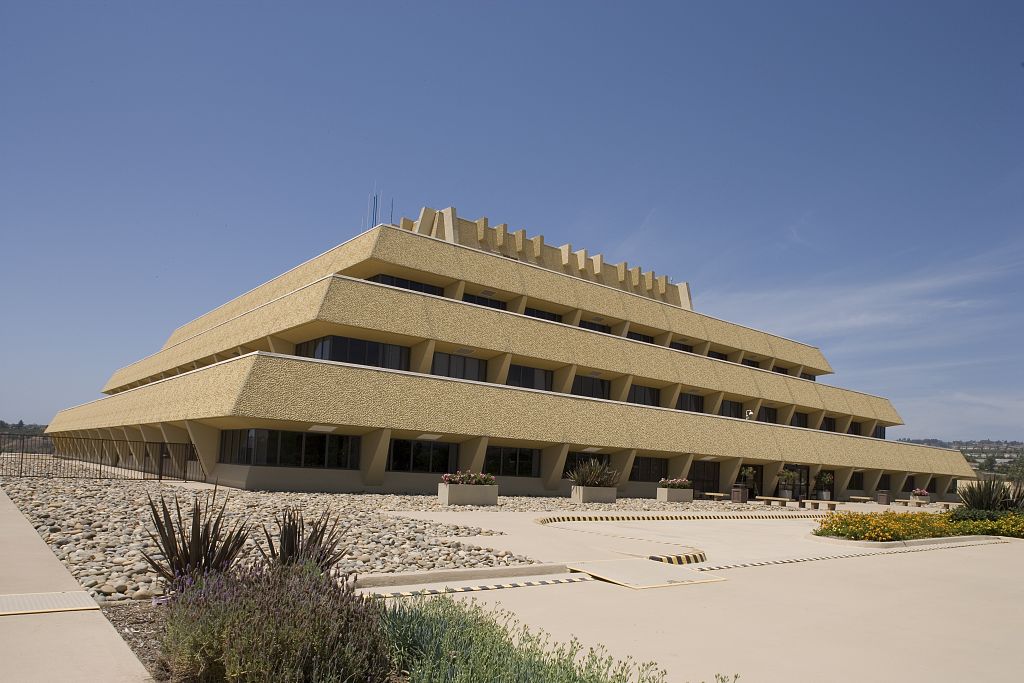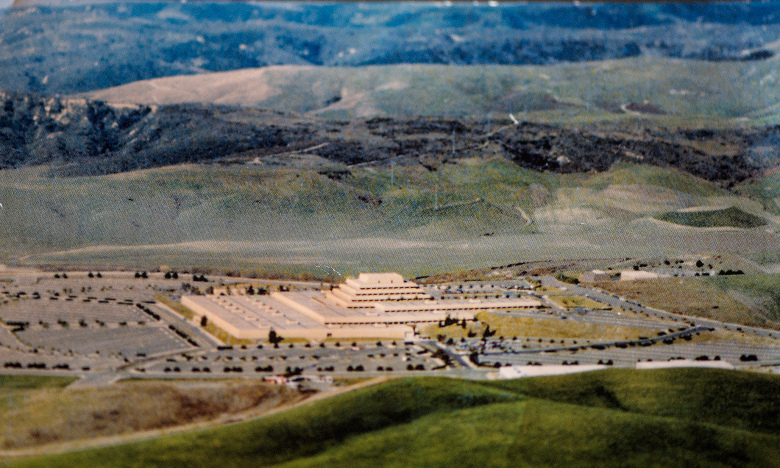Architects: Showcase your next project through Architizer and sign up for our inspirational newsletter.
An eye sore for some and a spectacle for others, the Chet Holifield Federal Building in Laguna Niguel, California, also known as the “Ziggurat”, has been a local landmark for decades. However, time may be up for the unique, monolithic structure as it is reportedly at risk of demolition.
The massive six-story, one-million-square-foot government services building, named after former congressman Chet Holifield, faces destruction as the U.S. Public Buildings Reform Board, responsible for unloading federal facilities, will likely sell the structure as early as next year.

The Chet Holifield Federal Building ,also known as the Ziggurat, as seen in 2013; image via Beyond My Ken/Wikimedia Commons
The “Ziggurat” was designed by architect William Pereira, who was nationally renowned for his design of the Transamerica Pyramid in San Francisco and the Los Angeles International Airport. Built in 1970, it was originally constructed to be a manufacturing facility. The company that was slated to occupy the space never moved in, and the federal government acquired the building in 1974, left it vacant for a decade and tried to sell it before finally putting it to use.
According to Andra Higgs, spokesman for the U.S. General Services Administration, which oversees property, the “Ziggurat” is one of twelve “high-value” federal facilities across the country designated to be sold in 2021. The building is currently operating at about half capacity, providing office space for about 3,000 employees from 12 agencies, including the Treasury Department, Citizenship and Immigration Services, ICE and others.
In the draft environmental impact statement released by the General Service Administration (GSA), open to public comment through September 4th, the agency laid out three possible options regarding the fate of the Chet Holifield Federal Building. The first option is private development, in which the building and 64 acres of the site would be transferred to the city of Laguna Niguel, who could then renovate or demolish the building and develop mixed-use projects. The second option is the removal of all federal staff and the transfer or sale of the entire site.

Image via Wikipedia
And, finally, the last option, which the GSA has said “would not meet the purpose and need of the project”, is holding onto ownership and retaining the building as it is. Preserving the existing structure appears infeasible: according to The Orange County Register, the 50-year-old building is looking at a projected $342 million in deferred maintenance expenses and an additional $339 million in future capital expenditures.
The building and its equipment have aged over the years with few upgrades and it no longer meets codes. Maintenance has been so poor that even the parking lots are degraded. With much of the building being unused, the city even rents space in the parking lots for outdoor basketball courts. In addition, the building also has a high presence of asbestos-containing materials.
Many city officials have indicated support for the redevelopment of the property and a willingness to work with developers to allow for mixed-use projects. According to The Orange County Register, Jonathan Orduna, Laguna Niguel community development director, says the land is prime development territory and that the city’s general plan would allow for 2 million square feet of development.

A 1971 image of the Ziggurat; image via The Orange County Register
The “Ziggurat” may not be doomed though. At 50 years old, the building has earned historical significance and is eligible to be added to the National Register of Historic Places. Its historic and architectural significance could save the structure.
The GSA is reportedly working with the State Historic Preservation Officer to determine possible deed restrictions, covenants and other restrictions for the next owner. According to The Architect’s Newspaper, “A final report will be created after the public has weighed in on the draft impact statement, then the Public Buildings Reform Board will issue a judgement after a final public meeting.”
Watch this space for further updates on the fate of this distinctive example of Brutalist architecture.
Architects: Showcase your next project through Architizer and sign up for our inspirational newsletter.
The post Should This Building Be Demolished? appeared first on Journal.